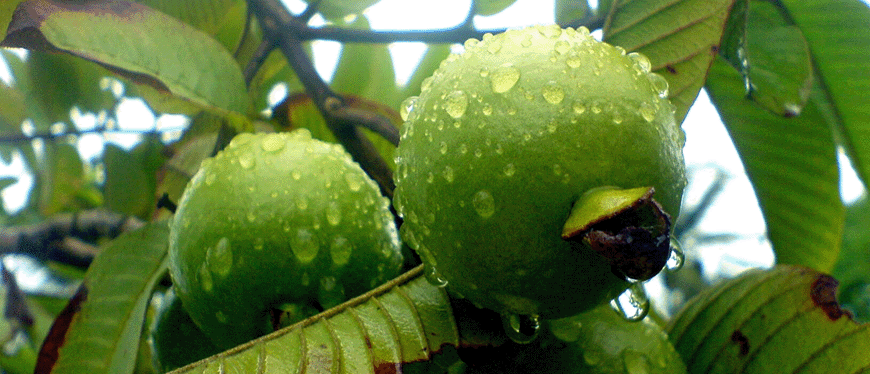Crop Production
Guava is considered as one of the exquisite, nutritionally valuable and a remunerative crop among the various fruit crops. Guava fruits is used both for fresh consumption and processing. Besides its high nutritive value, it produce good yield and economic returns involving very little inputs and little care and is good for rainfed areas.
Irrigation
-
 Irrigation:
Guava plants are generally grown under rainfed
conditions. However, irrigation has been found useful
for guava cultivation. During rainy season, guava plants
hardly require any irrigation. Irrigation once in every
20 days in summer and every month in winter improves
fruit set and fruit size and reduce fruit drop. In
regions with 380 - 500 mm annual rainfall, an additional
2460 mm of water is required through 8-10 irrigations,
April-June months being the critical period. Drip
irrigation is also recommended with 70% evaporation
replenishment.
Irrigation:
Guava plants are generally grown under rainfed
conditions. However, irrigation has been found useful
for guava cultivation. During rainy season, guava plants
hardly require any irrigation. Irrigation once in every
20 days in summer and every month in winter improves
fruit set and fruit size and reduce fruit drop. In
regions with 380 - 500 mm annual rainfall, an additional
2460 mm of water is required through 8-10 irrigations,
April-June months being the critical period. Drip
irrigation is also recommended with 70% evaporation
replenishment.

